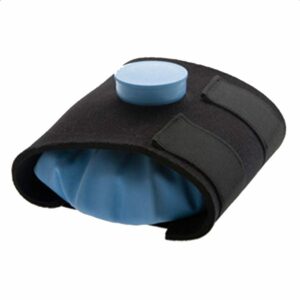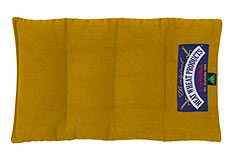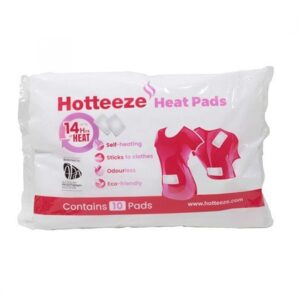Ice or Heat ?
Updated:
Should I use ice or heat to treat my injury?
It is often difficult for patients to determine whether ice or heat treatment is appropriate for an injury. Whilst heat often provides immediate comfort and relief, it may actually be causing more harm than good. Likewise, incorrect use of ice may also prolong injury recovery.
If used correctly, however, appropriate ice and heat treatment can help to reduce bleeding, inflammation, swelling, muscle spasm and pain following injury. Ice and heat treatment can also accelerate healing and hasten injury recovery.

How is ice treatment beneficial?
Ice treatment for injuries helps to reduce blood flow to the affected region. This is beneficial in the inflammatory phase of an injury (the first 72 hours following injury or injury aggravation) as it helps to reduce the amount of inflammation and swelling that accumulates in the injured region. Ice treatment may also help to reduce pain and muscle spasm.
In addition to ice treatment, further measures to reduce blood flow to the affected region are indicated in the first 72 hours following injury and should comprise: Rest from aggravating activities, Elevation of the injured part above the level of your heart and the use of a Compression bandage (see R.I.C.E.).
When should I use ice?
Ice treatment should be used for 20 minutes every 2 hours during the inflammatory phase of an injury (first 72 hours following injury or injury aggravation).
Since inflammation normally presents as a pain or ache that increases with rest (especially first thing in the morning or at night) and reduces with movement or a hot shower, we can use these symptoms as a guide for the indication of ice treatment.
Therefore, ice should be used for a minimum of 72 hours following injury AND until you have no achiness or pain at night or upon waking in the morning.
During this period, avoid heat treatment, alcohol and massage (to the injured area), all of which increase blood flow and subsequent inflammation.
How do I use ice?
When using ice for injury treatment, the injured area should be iced for 20 minutes every 2 hours. This can be accomplished by using crushed ice or an ice pack wrapped in a damp tea towel. Try to maintain good contact with the affected area and ideally elevate the injured area above the level of your heart.
For smaller areas, an ice massage may be performed for 5 minutes and repeated every 2 hours. This may be accomplished by applying ice directly to the injured area. A Styrofoam cup filled with water and placed in the freezer until it freezes can be an excellent way to perform an ice massage whilst protecting your fingers from excessive cold. Simply peel back the edge of the cup to expose the ice and apply to the injured area.
For the extremities, such as ankles, feet, toes, wrist, hands and fingers, submerging the injured body part into iced water for 10 minute periods every 2 hours may be easier to perform and more effective in treating these smaller areas.
(N.B. People who are sensitive to cold or have circulatory problems need to be wary when using ice treatment).
How is heat treatment beneficial?
Heat treatment increases blood flow to the affected region. This is beneficial after the inflammatory phase of an injury, since more blood flow means more nutrients and oxygen are transported to damaged tissue, therefore speeding healing. Heat can also help to reduce pain and muscle spasm as well as reduce muscle tightness and joint stiffness.
If used during the inflammatory phase (first three days), heat treatment may increase inflammation and swelling, and can subsequently prolong injury recovery.

When should I use heat?

Members Only ContentBecome a PhysioAdvisor Member to gain full access to this exclusive content. For more details see Become a Member. Already a member? Login Now
How do I use heat?

Members Only ContentBecome a PhysioAdvisor Member to gain full access to this exclusive content. For more details see Become a Member. Already a member? Login Now
Hot / cold therapy & contrast baths

Members Only ContentBecome a PhysioAdvisor Member to gain full access to this exclusive content. For more details see Become a Member. Already a member? Login Now
Ice or heat summary

Members Only ContentBecome a PhysioAdvisor Member to gain full access to this exclusive content. For more details see Become a Member. Already a member? Login Now
 Physiotherapy Products to assist with ice or heat treatment & rehabilitation
Physiotherapy Products to assist with ice or heat treatment & rehabilitation
To purchase physiotherapy products to assist with ice or heat treatment or injury rehabilitation click on one of the above links or visit the PhysioAdvisor Shop.
 Find a Physio
Find a Physio
Find a physiotherapist in your local area who can treat your injury and give appropriate ice or heat advice.
 More Information
More Information
- View further information about the R.I.C.E. Regime.
- Read detailed information about a variety of Injuries.
Become a PhysioAdvisor Member

Link to this Page
If you would like to link to this article on your website, simply copy the code below and add it to your page:
<a href="https://physioadvisor.com.au/health/injury-rehabilitation/ice-or-heat”>Ice or Heat ? – PhysioAdvisor.com</a><br/>PhysioAdvisor offers expert physiotherapy advice and information on when to use ice or heat fto treat injuries and how to use ice or heat to treat injuries.
Return to the top of Ice or Heat ?.







